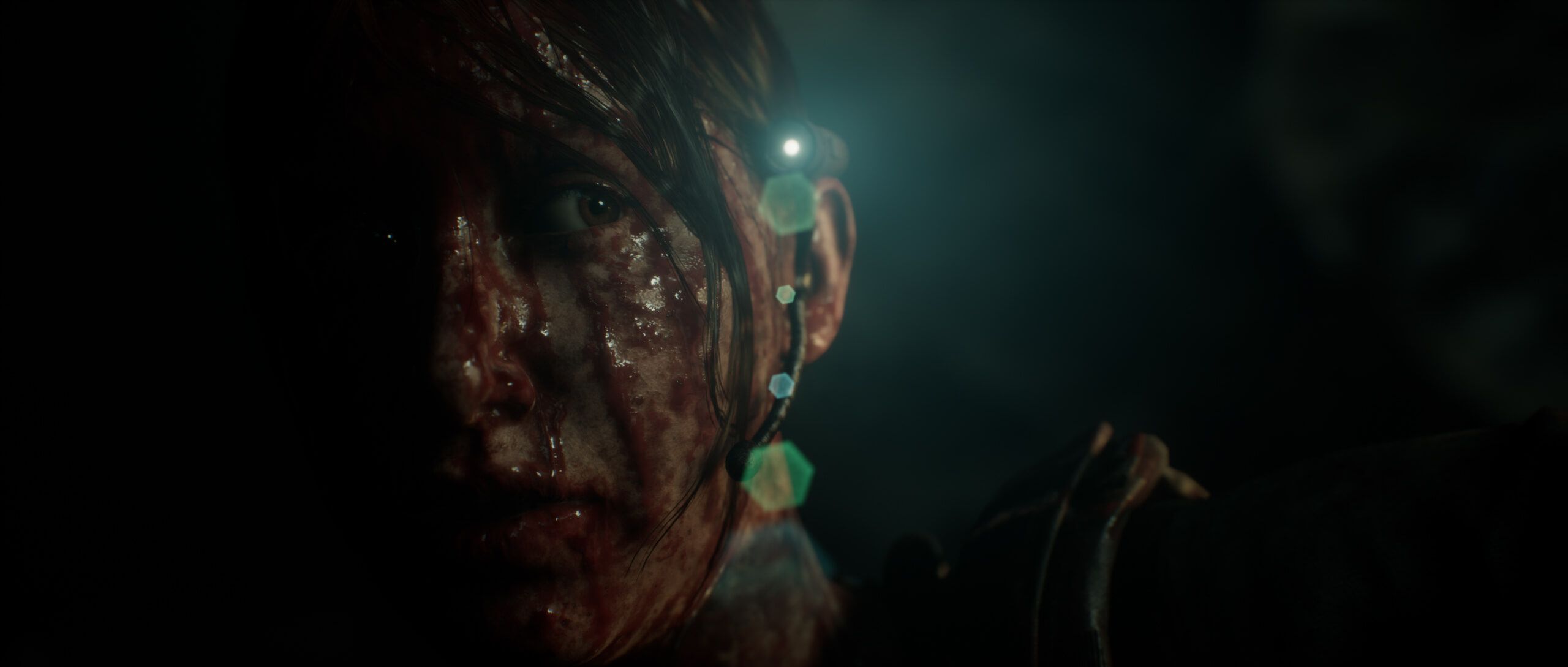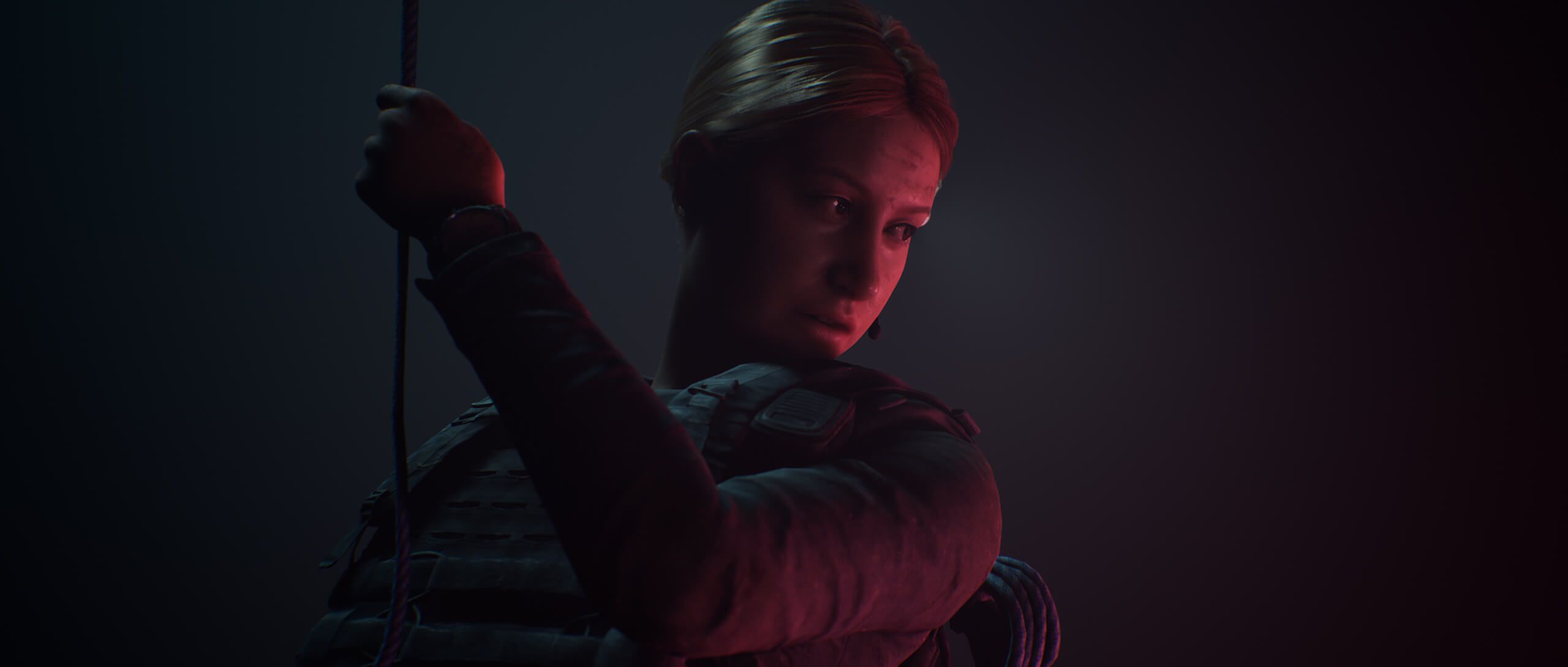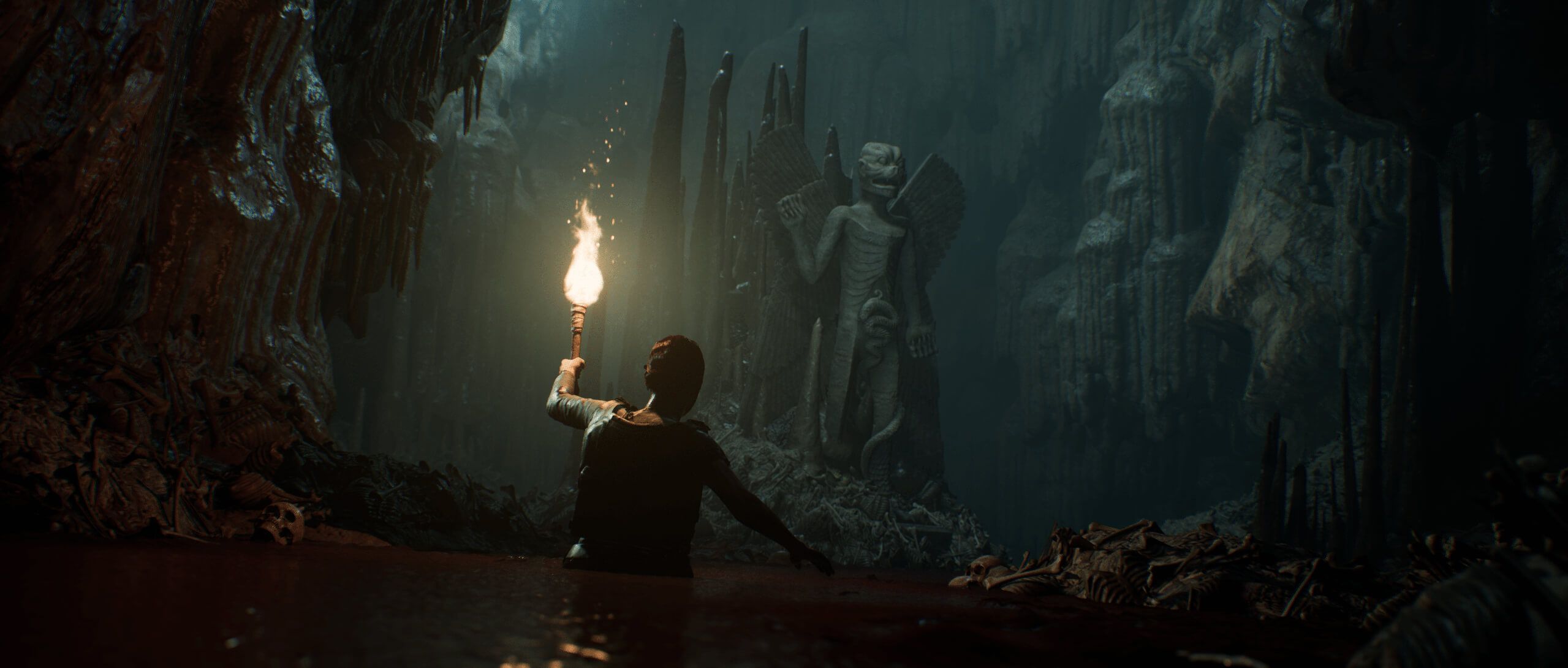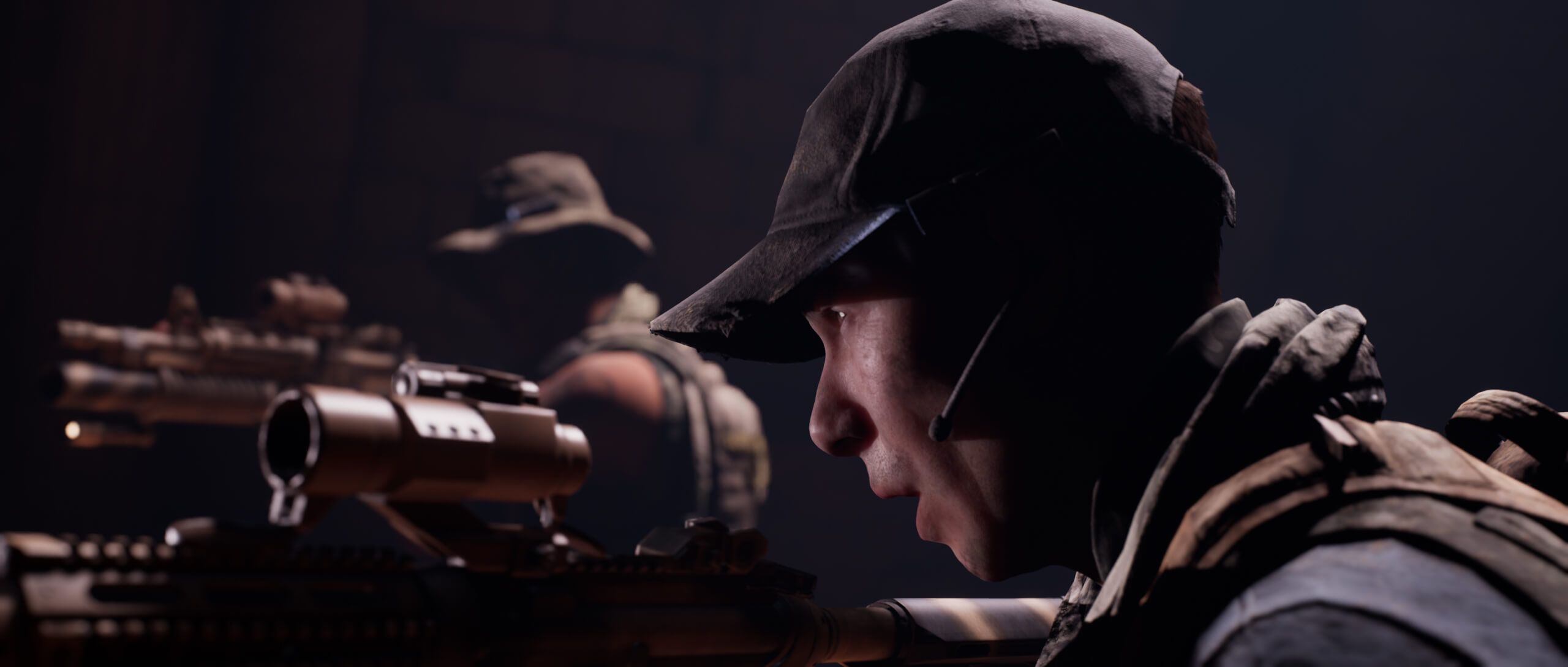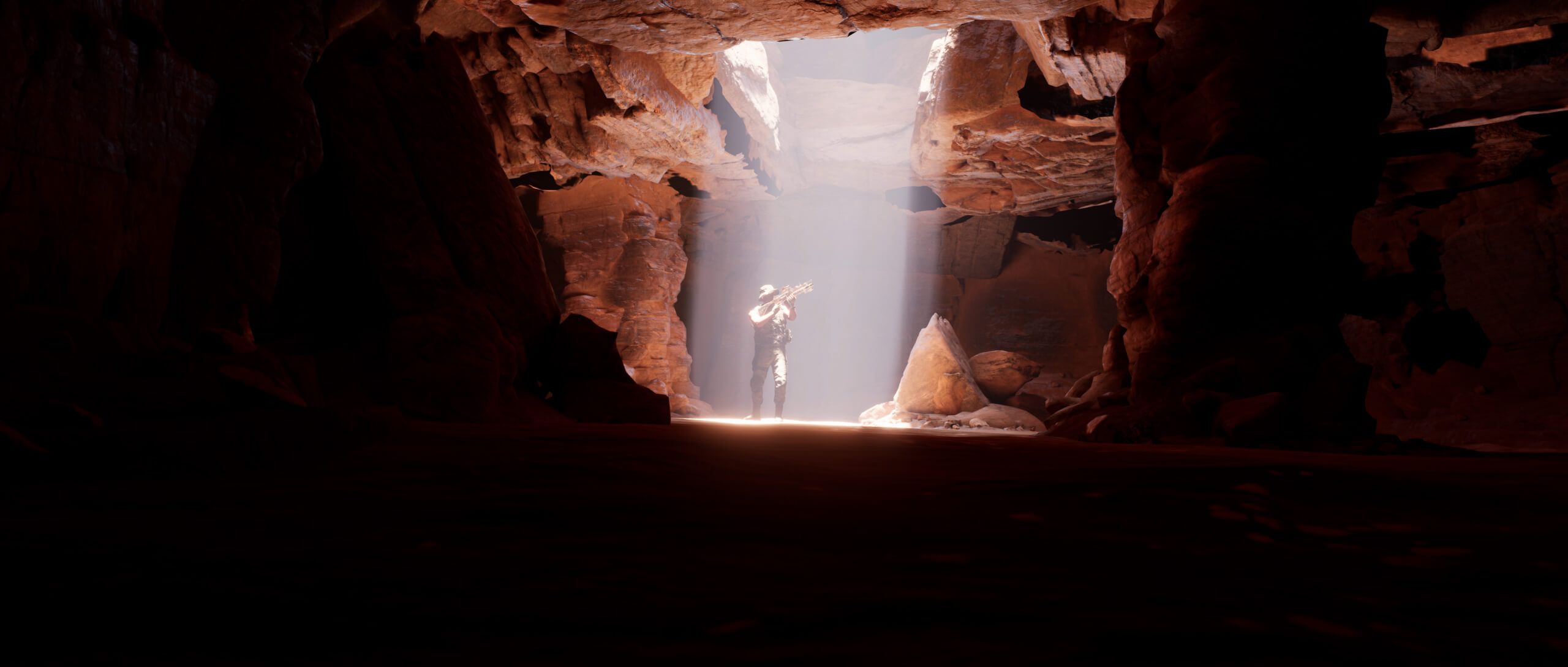The Dark Pictures Anthology: House of Ashes
- Platform(s)
- PS5
- Developer(s)
- Supermassive Games
- Publisher(s)
- Bandai Namco Entertainment
- Genre(s)
- Survival Horror
During the release of Ridley Scott’s Alien, it was promoted that “In space no one can hear you scream.” If you’re trapped underground, however - surrounded by a labyrinth of chasms, temples, and monsters - everyone and everything can hear you scream, scuffle, and drip sweat. This kind of tension harbored within Supermassive Games’ latest chapter in The Dark Pictures Anthology, House of Ashes, is exactly what fans of the spooky season are looking to invest in this Halloween, and despite a few technical hiccups, the successor to Man of Medan and Little Hope is narratively on par with some horror greats - and it gathers everyones' fears into one behemoth.
Following on from my experience with the hour-long House of Ashes preview, the full experience didn’t disappoint. The taster effectively set the claustrophobic atmosphere, introduced the key players, and gave glimpses of the threats that awaited in the wings of the underbelly. In line with the previous two chapters of the anthology, the preview also set the stakes tethered to the choices you make through selected dialogue. Within the main feature, The Dark Pictures’ Curator makes a return to convey the importance of these choices.
Of course, any game with the option of multiple outcomes begs for more than one playthrough to reap the full rewards of the narrative and investible characters, and with gameplay sitting at around five hours long, fans should be able to complete a few playthroughs before the witching hour begins. I indulged in a solo run of House of Ashes, but the survival horror also offers co-op mode for some support if you scare easily.
Note: This review is largely spoiler-free, however, themes, characters, and monsters are briefly discussed.
- Far Cry 6 Review: A Revolution for the Series
After the prologue set in ancient Akkad - establishing the origins of the scares I was about to endure - the narrative fast traveled to Iraq in 2003 and introduced the US marines I would become acquainted with on this harrowing journey: Jason Kolcheck, Eric King, Rachel King, Nick Kay, and Salim Othman. After a covert operation goes south, the marines fall beneath the surface into an underground temple, filled with history, darkness, and the ruling of another race. It is evident from early on in the narrative that the Alien and Predator franchises, as well as the horror film, The Descent, was used to inspire House of Ashes’ scale and cinematography, but its pacing and character development still managed to carve a pocket of originality alongside these classics.
The character roster is filled with personalities that you love to love and love to hate, and players should be able to pick out the worthy from the unworthy rather quickly. Having said that, the narrative does give you room to warm to some of the marines along the way. High School Musical’s Ashley Tisdale made a leap outside of her professional comfort zone to play Rachel, the ‘Queen Bitch’, alongside her smothering husband Eric (Alex Gravenstein) from whom she has separated for over a year.
Being in control of these characters’ responses allowed me to be part of the development process, and during my first playthrough, I had a blast building these characters into antagonists.
Whether you’re being true to yourself and making the characters respond the way you would, or building a clear good guy/bad guy mentality from the start, the choices presented in House of Ashes are sometimes tough. One decision had me choose between saving an infected comrade or abandoning them, and following the antagonistic mentality I had established, I abandoned them - a decision that would leave me cold and haunt the rest of my gameplay.
Despite opting to choose the more violent, unsympathetic dialogue options, I saw myself warming towards the remaining characters by the end and my frosty demeanor subsided in favor of making characters feel good, like Salim (Nick Tarabay) - an Iraq soldier who struggles with the idea of putting war with the marines aside in order to survive the game’s bigger threat.
In a greater attempt to distance House of Ashes from horror narratives gone before, Supermassive opts to include a rather farfetched, but nevertheless interesting, origin story for the vampires - reminiscent of Christopher Nolan’s penchant to include hard-to-grasp plot points.
That larger menace comes in the form of vampires that crawl like spiders and fly like the classic monsters. With shrieks like Ringwraiths from The Lord of the Rings, slender, pointed fingers that wrap chillingly around wall corners, and cocoons to store offspring, the blood-suckers within House of Ashes offer nothing unique to the horror genre, but their domain does. The monsters' design is often shrouded in darkness, which is preferable - there’s nothing worse than seeing the face of sinister hunters before the game has had time to build tension - and they are reasonably unsettling during the forefront of the game.
However, the real scares come into play when the Sumerian demon, Pazuzu, is mentioned by Rachel, foreshadowing a bigger threat at the helm of the vampires. The game’s denouement offers an original look at the vampires' ‘home’ deep underground, which is where film buffs will pick up on Prometheus vibes.
In a greater attempt to distance House of Ashes from horror narratives gone before, Supermassive opts to include a rather farfetched, but nevertheless interesting, origin story for the vampires - reminiscent of Christopher Nolan’s penchant to include hard-to-grasp plot points. This pocket of exposition is perhaps the most in-depth part of the narrative that doesn’t directly deal with character development. Other colorful notes that appear throughout the story include Rachel’s response to Eric when he points out that the contents of the temple look “old” - “They’re ancient!” Rachel replies. This is one of the very few examples of comedy during House of Ashes' gameplay, which was more than welcome when the grim set in.
As this chapter is, once again, fuelled by narrative and character development, it made sense that a bulk of this review was dedicated to that corner. Paying attention to the technical side of the game, however, is where the narrative’s hold over me got sporadically severed. The primary hiccup that jolted me back from escapism was the programming of the characters' eyes. Their eyes always seemed to be pulling towards high corners and rarely looking at the person they were speaking to. This anomaly certainly calmed down as the game progressed, but it was disappointing to see this detract from the impressive textures surrounding the rag-doll eyeballs.
Another technical mishap that couldn’t be ignored was the editing. When I made certain dialogue decisions, it looked as though the game was attempting to catch up with my choices to produce an abnormal jumpcut or shaky transition that did nothing but remind me I was playing a multiple choice game rather than leaving me lost in immersion. A final technical point to mention was the heavy movements of the characters. While this style didn’t aid my gameplay above ground, it did while below, adding to the feeling of claustrophobia and the difficulty of moving in the sand and navigating the dark abyss.
Supermassive has an incredible talent for creating gripping narratives of a horror persuasion, and despite some technical bumps in the sand, my retrospective opinion on House of Ashes still remains the same: It’s a bloody good creature feature.
These gripes did nothing to hinder Supermassive’s fantastic ability to tell enthralling stories, but they did stall my ability to become completely absorbed. Despite rolling my eyes at the characters' pinball eyes, I was quickly captivated again by the ray tracing and cinematography of the game, which was damn near perfect. As mentioned in the preview, the monochrome color palette of House of Ashes’ sandy depths allowed the flashes of red flares and a surprising green glow towards the end of the game to fuel eye-widening moments and a desire to save those snapshots as high-definition wallpapers.
Supermassive has an incredible talent for creating gripping narratives of a horror persuasion, and despite some technical bumps in the sand, my retrospective opinion on House of Ashes still remains the same: It’s a bloody good creature feature. I often thought that House of Ashes would make a better film or television series because of its layered narrative, but then I remembered the fun I had weaving my own outcome, navigating the sheer scale of the game, and using parkour mechanics over nearby obstacles.
By the end of House of Ashes, I was begging for sunlight, but now, I’m eager to return to the Curator to be plunged into darkness once more.

